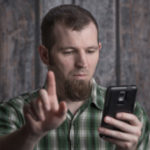Forums › Forums › Get Technical › Farktography tech talk › scanning glass negatives
- This topic has 3 replies, 4 voices, and was last updated 12 years, 1 month ago by
 orionid.
orionid.
-
AuthorPosts
-
June 17, 2012 at 11:41 pm #2746
zincprincess
ParticipantMy mother-in-law will soon be the heir to a large collection of photographic equipment and glass negatives. My husband?s brother-in-law is going through the equipment to inventory it and ready it for sale. (I will post a list later.) This guy has been a photographer for 50 years and ran a photography store for a number of years. Anyway, my question is about the glass negatives which he inherited from another photographer family member. I haven?t seen them but am told they date from the 1900?s. He has digitized about half of the negatives and isn?t really in good enough health to deal with the rest of them. Asking him how he did it is not a possibility right now. My MIL and I want to preserve the rest of the collection because they are likely historically significant photographs for the family but also for the people who live in that part of Tennessee. Personally I hate to see something like this go unpreserved. Have any of you done this sort of thing? What is the best technique to do this? Any tips would be appreciated as I am pretty sure that I will be the one who will take on this task. Personally I think this will be easier than going through the dusty, poorly organized boxes of gear. Time will tell.
June 18, 2012 at 6:44 pm #47952sleeping
ParticipantI’ve only scanned a couple, but if you have a large format film flatbed scanner available that will scan them pretty much like normal film – the only catch is a 4×5 film scanner will only scan *most* of a half plate negative, not the whole thing (they’re more like 5×6).
Otherwise, the easiest thing to do might be to photograph them on a light table and invert the results. If they’re consistent in size, you could probably rig up some kind of mask to put them in a consistent place. A copy stand would make aligning things easier, but a tripod can work for that sort of thing too….
June 18, 2012 at 7:10 pm #47953chupathingie
ParticipantA standard flatbed scanner can do this (I’ve done this with my old 35mm film negatives). You need a matte for the originals, remove the top of the scanner and cover with either a lightbox (I’m using that term as an astrophotographer, not sure if it’s the same thing for you normal folks) or leave it open to the daylight sky or a well lit ceiling. You may have to adjust color balance using this method. It’s also important to put the emulsion side against the scanner glass or you may get blurring; you can always correct for image inversion if needed later.
edit: It’s important that the external light source be brighter than the light inside the scanner or the reflected image will overpower the transmission image. If you wanna tinker you can mask off the scanner’s internal LEDs to eliminate them entirely as a source of reflection.
June 18, 2012 at 10:25 pm #47954 orionidParticipant
orionidParticipantSleeping and Chupa pretty much nailed it. All I have left to add is that if the glass is old enough that it’s started to warp (It has no crystalline structure and behaves like a liquid on the loooooooooooooooooong term scale), you might see newton rings from your scanner where the galss negative and the glass scanner cnage from touching to not touching. You can solve this by lifting it slightly. A penny under each corner should do nicely.
-
AuthorPosts
- The topic ‘scanning glass negatives’ is closed to new replies.